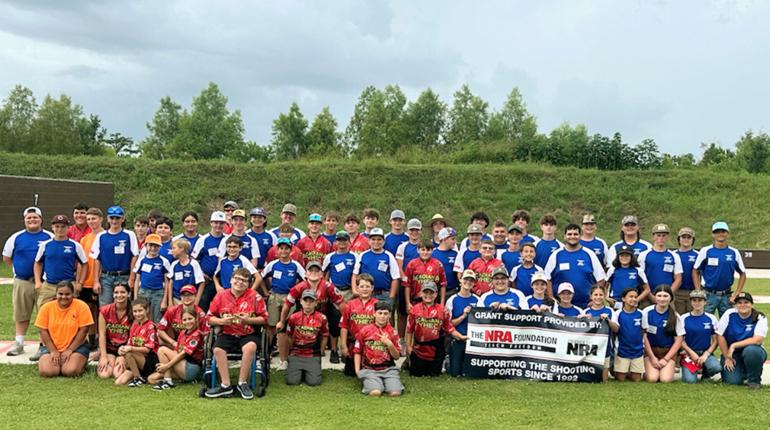
The NRA has been America’s firearm safety, education and training leader and No. 1 defender of the Second Amendment for 150 years, but did you know it also is the nation’s linchpin in shooting range development? Powered by your NRA membership dollars, the NRA is America’s authority in helping states not only to build more shooting ranges, but also in helping communities secure the funding to do so.
For starters, NRA Range Services offers the NRA Range Source Book, a 27-chapter manual providing guidance in the planning, design, construction, maintenance and operation of shooting ranges. It also provides onsite assistance and educational seminars to range developers and operators and lists all NRA-affiliated ranges on an online list of places to shoot, helping ranges to draw new members and clientele. (rangeservices.nra.org)
Through NRA Range Services and The NRA Foundation, the NRA provides its own stimulus for shooting range development through matching grants. Established in 2009, its Public Range Fund (PRF) is a grant-matching program that encourages local governments and state and federal agencies to work with the NRA to build and improve public ranges while addressing environmental issues related to range operations. Half the project costs are provided by the applicant and can include in-kind services such as labor and materials; the other half is provided by the fund.
There’s more. Ensuring NRA members can enjoy the freedoms for which it fights, the NRA played a vital role in the 2016 election of President Donald J. Trump. In May 2019, Trump signed into law H.R. 1222, the groundbreaking Target Practice and Marksmanship Training Support (TPMTS) Act. NRA-ILA drafted the bill, furthering the NRA’s cooperative efforts with state fish and wildlife agencies to build more ranges. TPMTS specifically amends the Federal Aid in Wildlife Restoration Act of 1937, known as the Pittman-Robertson (P-R) Act, “to facilitate the establishment of additional or expanded public target ranges in certain states.” The changes provide financial incentives to state wildlife management agencies to build, expand and improve shooting ranges by lowering the required “matching share” from 25 to 10 percent. It also increases the time grant funds remain available from two to five years.
But there’s even more. Seizing on the TPMTS opportunity to access increased P-R funds, in 2020, the NRA stepped up to help form the Association of Fish and Wildlife Agencies’ (AFWA) Range Working Group. Representatives from the NRA, Archery Trade Association, USA Clay Target League, U.S. Fish and Wildlife Service and several state agencies rolled up their sleeves to help state agencies begin building more ranges. While sportsmen are aware P-R funds have been used for land and habitat acquisition, wildlife management and hunter education since 1937, less known is the fact that these funds may be used for target-shooting opportunities.
Promoting target shooting is increasingly fitting amid 21st-century P-R funding changes. As reported by the NRA Hunters’ Leadership Forum website, NRAHLF.org, with the P-R excise tax imposed on all firearms and ammunition, more than 75 percent of P-R funds now come from shooters who may not hunt. Providing more ranges through the TPMTS demonstrates support of both wildlife conservation and public shooting opportunities. The NRA’s funding partners currently include: the Wildlife and Sport Fish Restoration Program, Archery Trade Association, National Shooting Sports Foundation, the U.S. Fish and Wildlife Service and state wildlife agencies. The motto: Build it and they will come.
The AFWA Working Group reports that P-R funds have supported the construction, operation and maintenance of more than 600 public ranges nationwide. Other projects include parking lot construction; assistance with ADA compliance, noise and/or lead management; firearm and archery education; and the development of a handgun or rifle range.
Considering the NRA’s significant investment in safe, structured shooting range facilities, why not let the NRA help your community to plan its range? Range development, training and shooting opportunities got a nice boost through the TPMTS, but shooters and their state agencies must act to benefit. The funds have a five-year expiration date, and the clock is ticking.


































